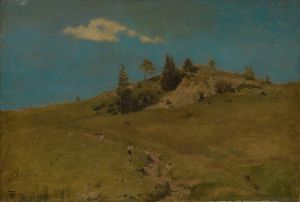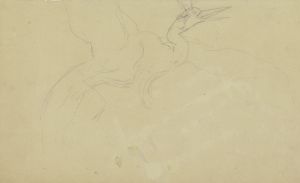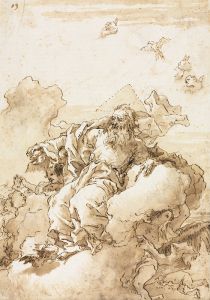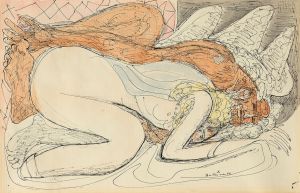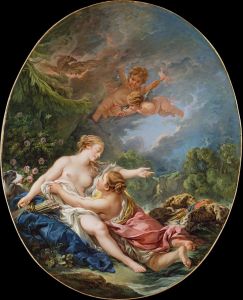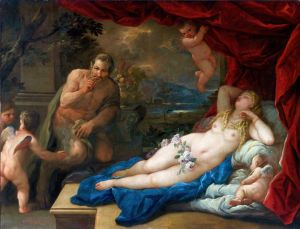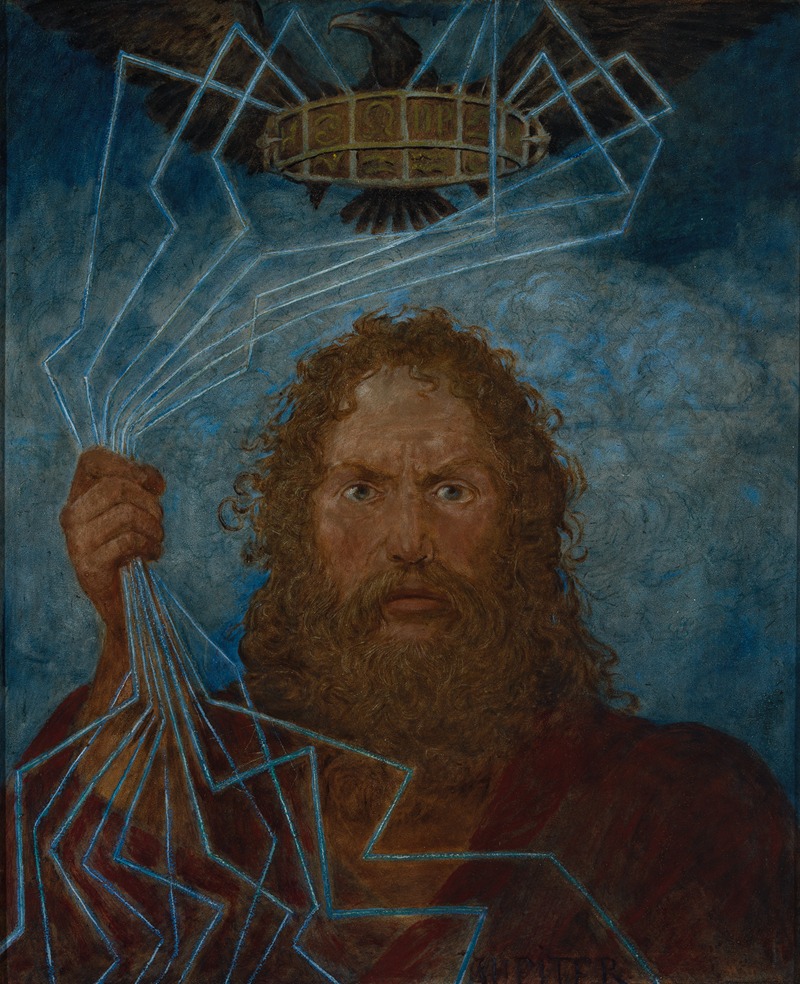
Jupiter
A hand-painted replica of Hans Thoma’s masterpiece Jupiter, meticulously crafted by professional artists to capture the true essence of the original. Each piece is created with museum-quality canvas and rare mineral pigments, carefully painted by experienced artists with delicate brushstrokes and rich, layered colors to perfectly recreate the texture of the original artwork. Unlike machine-printed reproductions, this hand-painted version brings the painting to life, infused with the artist’s emotions and skill in every stroke. Whether for personal collection or home decoration, it instantly elevates the artistic atmosphere of any space.
Hans Thoma (1839–1924) was a German painter known for his landscapes and portraits, often imbued with a sense of romanticism and symbolism. One of his notable works is "Jupiter," a painting that reflects his interest in mythological themes and his ability to blend realism with fantastical elements.
"Jupiter" by Hans Thoma was created in 1896. The painting depicts the Roman god Jupiter, known as Zeus in Greek mythology, who was the king of the gods and the god of sky and thunder. Thoma's portrayal of Jupiter is both powerful and serene, capturing the deity's commanding presence and divine authority.
In the painting, Jupiter is shown seated on a throne, holding a scepter in one hand and a thunderbolt in the other, symbolizing his control over the heavens and his role as a bringer of storms. The background of the painting features a dramatic sky, with swirling clouds and flashes of lightning, emphasizing Jupiter's dominion over the natural world. Thoma's use of light and shadow adds depth and intensity to the scene, highlighting the god's majestic and formidable nature.
Thoma's "Jupiter" is characterized by its detailed and realistic rendering of the human form, combined with a sense of otherworldly grandeur. The artist's skillful use of color and composition creates a dynamic and engaging image that draws the viewer into the mythological narrative. The painting reflects Thoma's deep appreciation for classical mythology and his ability to reinterpret these ancient stories through his unique artistic vision.
Hans Thoma was part of the German Symbolist movement, and his work often explored themes of nature, mythology, and the human condition. "Jupiter" is a prime example of his ability to merge these elements into a cohesive and compelling work of art. The painting is housed in the Kunsthalle Karlsruhe, a museum in Karlsruhe, Germany, which holds a significant collection of Thoma's works.
Throughout his career, Thoma was celebrated for his contributions to German art, and his works continue to be studied and admired for their technical mastery and imaginative depth. "Jupiter" remains one of his most iconic paintings, showcasing his talent for bringing mythological figures to life with a sense of realism and wonder.
In summary, "Jupiter" by Hans Thoma is a masterful depiction of the Roman god, blending realism with mythological grandeur. Created in 1896, the painting is a testament to Thoma's skill and his fascination with classical themes, making it a significant piece in the artist's oeuvre and in the broader context of German Symbolist art.







